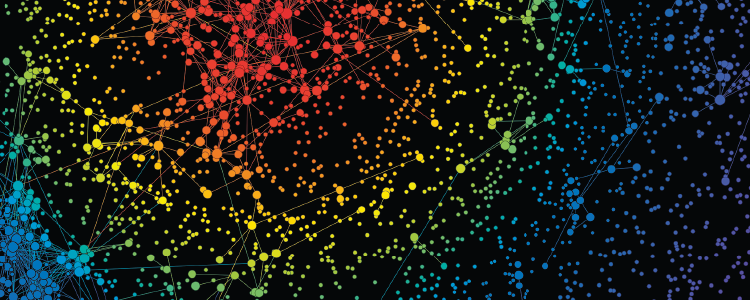In collaboration with researchers at the Max Planck Institute for Dynamics and Self-Organization I’ve worked in implementing tools to infer network structure in neuronal cultures by analyzing their dynamics through calcium imaging recordings.
Olav Stetter and coworkers generalized the Transfer Entropy (TE) formalism to use it in calcium imaging recordings of neuronal cultures (You can read about it in their paper here). In short, transfer entropy is a information-theory measure that identifies the influence of one signal into another. Let’s assume that we have two signals X and Y (can be anything), and we want to see if X has any influence on Y. What TE does is measure if the knowledge of the past history of X helps in predicting the future of Y (rather than just looking at the past of Y itself). This measure of influence, when properly conditioned, can be mapped to causality
Network inference from dynamical data is extremely important, because most of the time (specially in neuroscience) the network structure is not (and even cannot be) known. By using information-theory measures like Transfer Entropy we might be able to shed some line into the precise structure of the brain in a specific point in time, and even its ever-changing evolution.
I joined their research and extended the TE formalism to also tackle inhibitory connections (since their previous work focused on excitatory only neurons). Inhibition introduces a new layer of complexity that’s not easy to deal with. All (or most) inference measures identify influences between time series, but are not able to tell you anything about the kind of interaction per se. Is the interaction excitatory or inhibitory? Is it promoting activity or hindering it? By combining different recordings over the same network (with and without inhibition blockade) and different levels of external stimulation we were able to devise a protocol that would allow us not only to identify and separate inhibitory from excitatory connections, but also to unveil the neuronal type from the dynamics.
You can find more information in the paper
http://javierorlandi.com/?p=194
We are also applying this formalism to identify functional and structural differences between healthy and sick cultures. By looking at the functional networks obtained from the dynamics in cultures grown from subjects with specific neurodegenerative disorders we want to see if these techniques can help in both predicting disease and in the efficacy of possible intervention therapies (something on these lines should be published soon).
